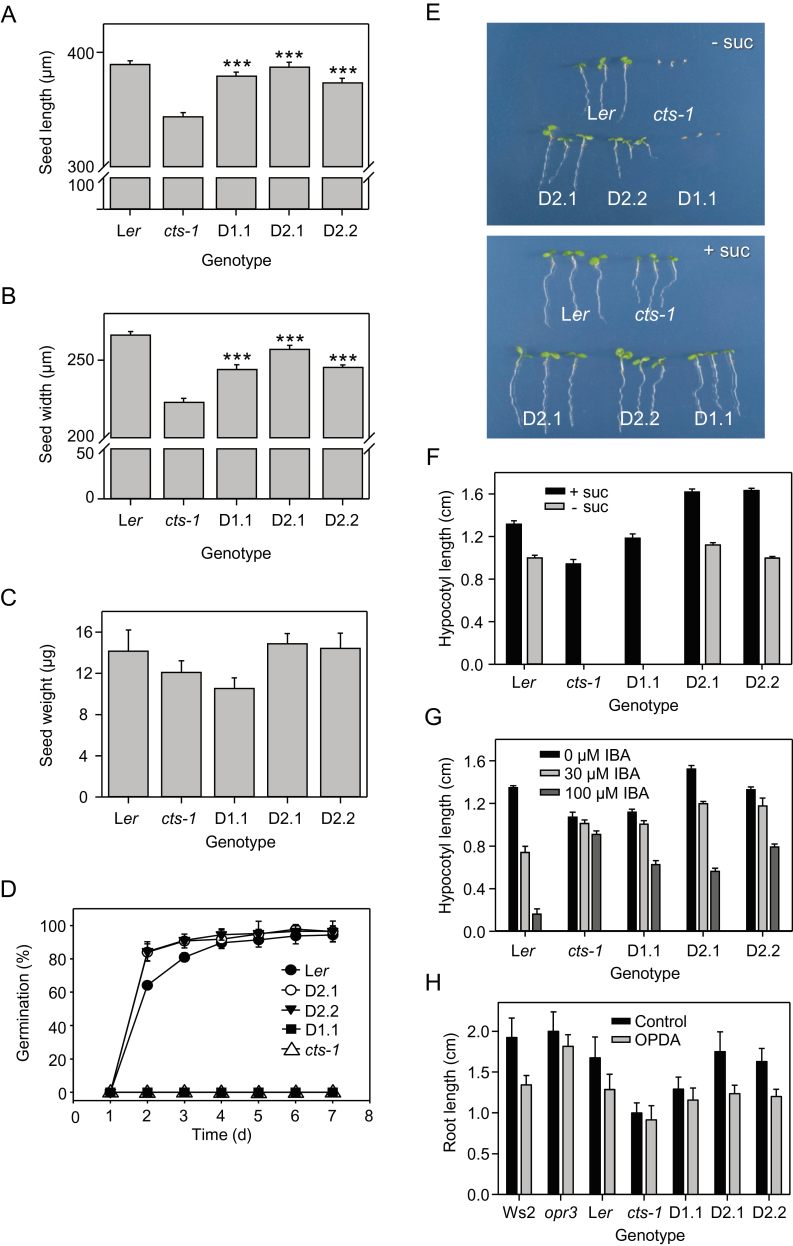Fig. 5.
Complementation of cts-1 by HvABCD1 and HvABCD2. (A, B) Length and width of seeds of cts-1, complemented lines, and the wild type (Ler). Values are means ±SE (n=3; 30 seeds per replicate). t-test indicates significant difference of transgenic lines from cts-1 (***P<0.001). (C) Seed weight. Values are means ±SE (n=5; 80 seeds per replicate). (D) Germination over 7 d on water agarose. Values are means ±SE (n=3; 50 seeds per replicate). (E) Seedling establishment on 0.5× MS with or without 0.5% sucrose. In the upper panel, seeds of cts-1 and cts-1 AtCTS:HvABCD1.1 were induced to germinate by mechanically rupturing the seed coat and plating on sucrose medium for 2 d before transfer to medium lacking sucrose (–suc). Seedlings were rearranged on a fresh plate for photography. (F) Elongation of hypocotyls in the dark on 0.5× MS with or without 0.5% sucrose. (G) Elongation of hypocotyls in the dark on 0.5× MS containing 0.5% sucrose and different concentrations of IBA. Values are means ±SE (n=3; 20 hypocotyls per replicate) in F and G. (H) Effect of oxophytodienoic acid (OPDA) on root growth. Medium is 0.5× MS containing 0.5% sucrose; values are means ±SE (n=25). The opr3 mutant lacks oxophytodienoate reductase and is unable to convert OPDA to JA. (This figure is available in colour at JXB online.)

